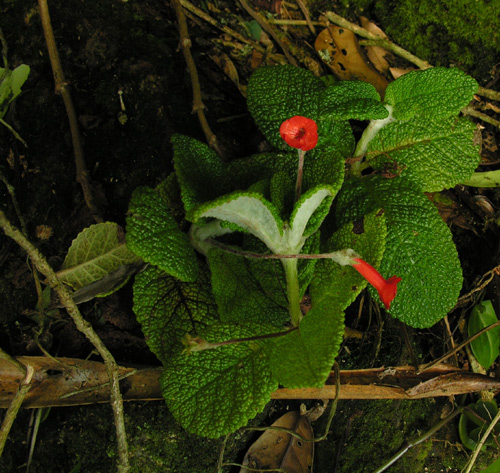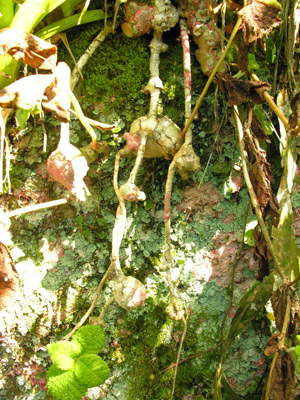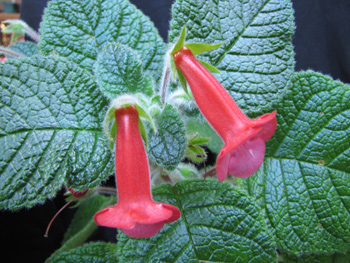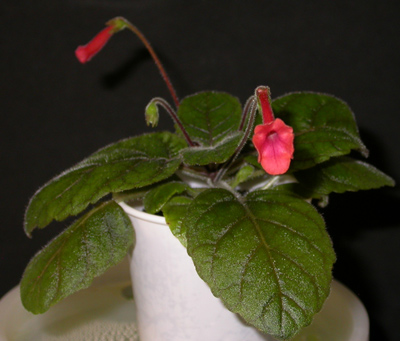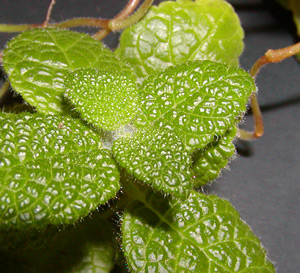
- In the Wild
- Propagation
- Cold tolerance and flowering
- Hybridization
- Feature table
- External link
- Publication and etymology
This species is remarkable for the thick white wool on the back of new leaves and on the tips of new shoots.
Mauro Peixoto described finding this plant on Gesneriphiles:
Dr Alain Chautems is preparing the Gesneriaceae family of the "Illustrated Flora of Santa Catarina State" and had some doubts about a few [specimens of] dried material that he was analyzing... One of the doubts was a Sinningia that looked like a small leaved S. lineata that someone had collected years ago at a place called "Testa do Macaco" (Monkey's Forehead). So we went to Florianopolis, Santa Catarina. Dr. Ademir Reis from the UFSC (Federal University of Santa Catarina) hired a local guide to take us there. After half hiking and half climbing up a mountain for 2 hours we finally reached the plant!
Florianopolis is the capital of Santa Catarina state, in southern Brazil. It lies partly on the mainland and partly on Santa Catarina island. Three bridges connect the mainland with the island, but one of them is no longer in use.
The plant was growing on vertical hillsides (one of the favorite sinningia growing places, it seems, since S. nivalis, S. hatschbachii, and S. calcaria grow in similar situations).


